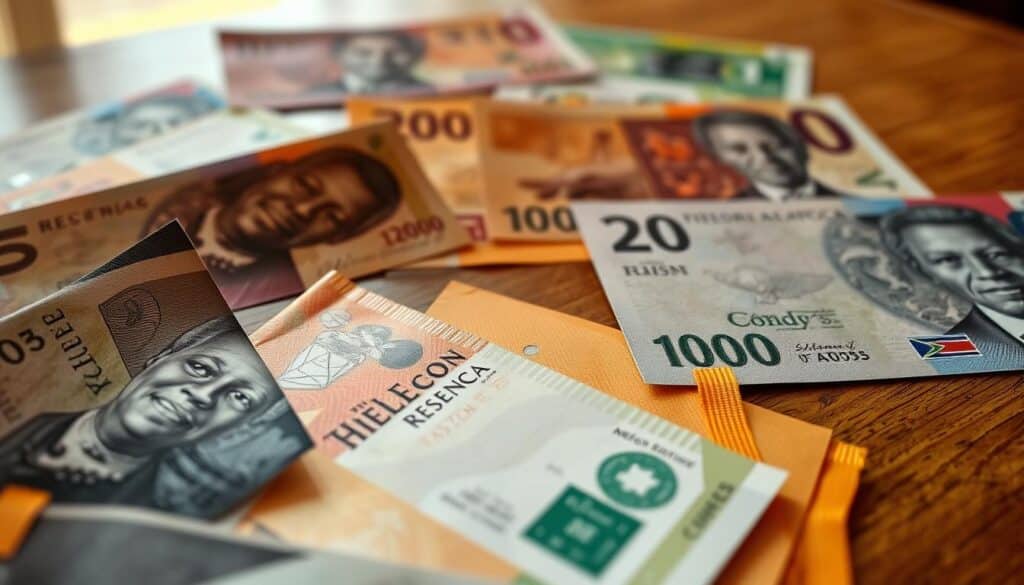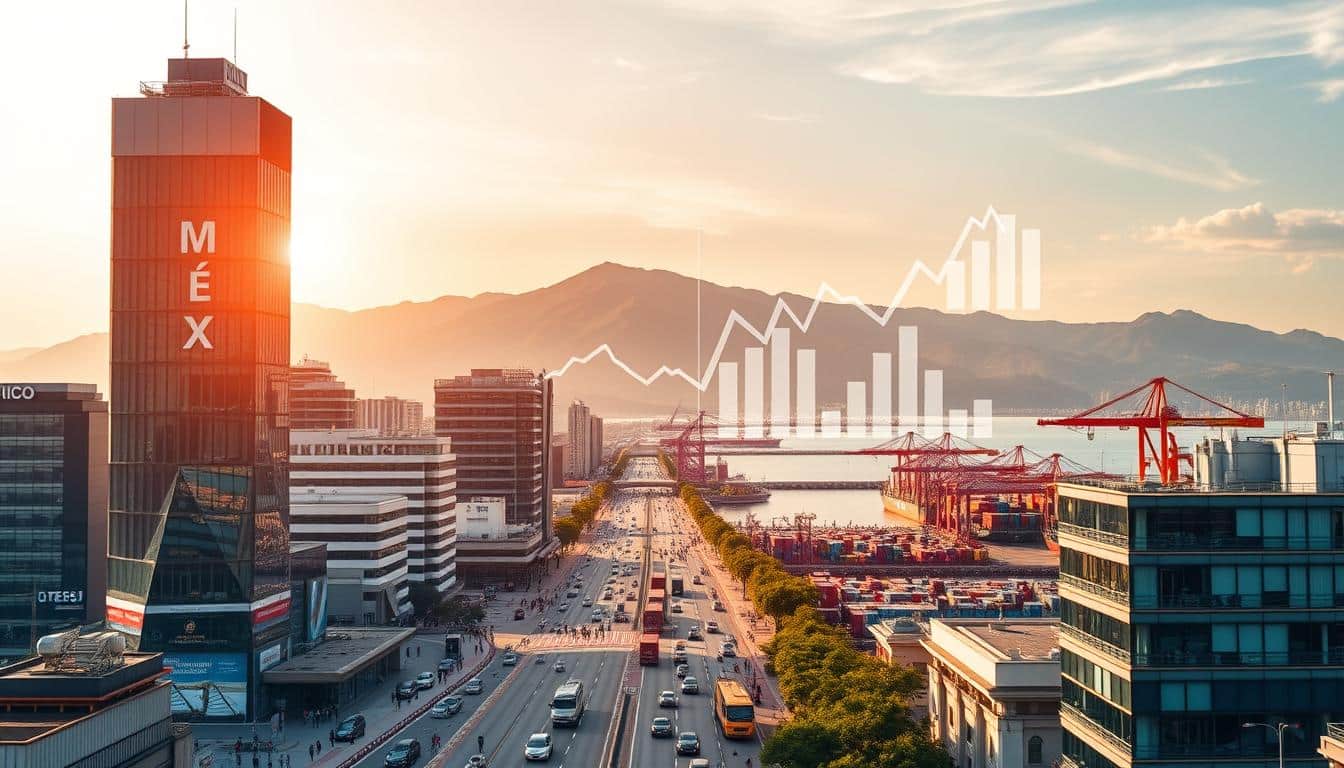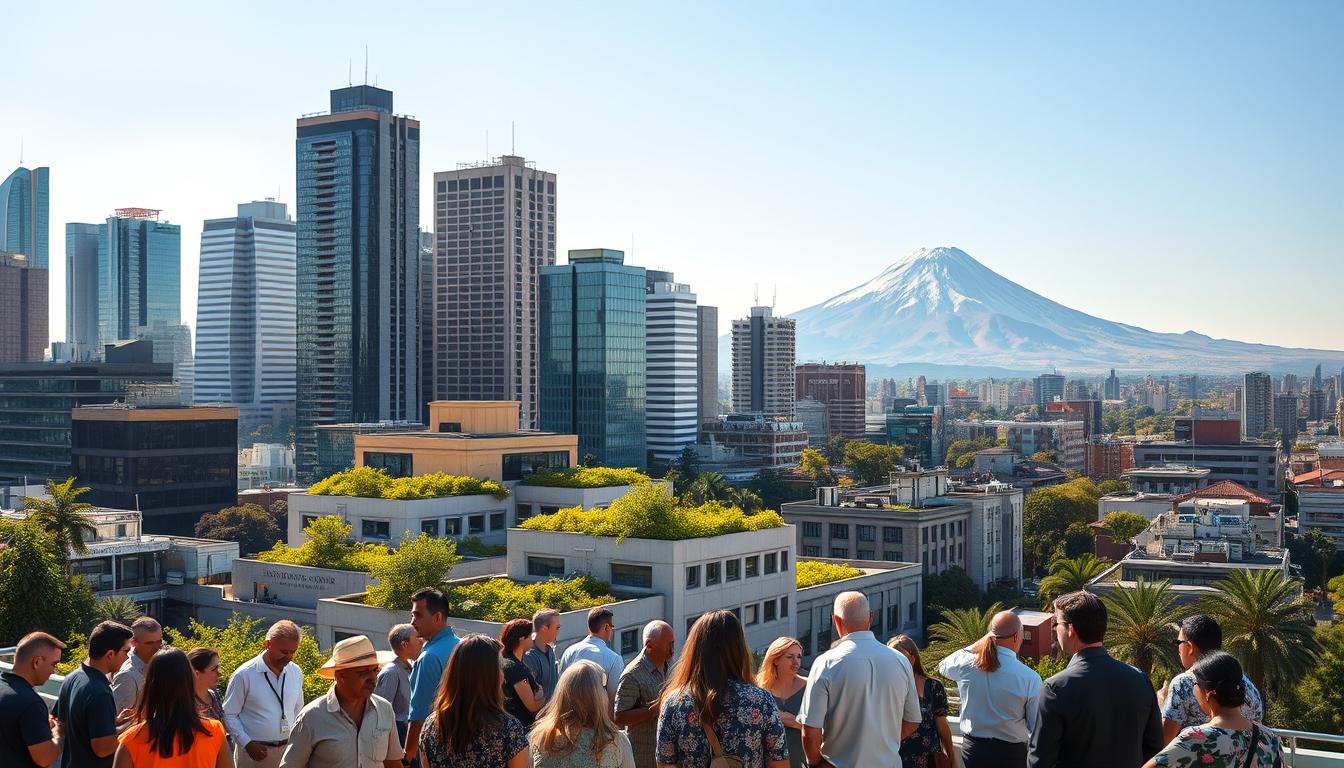The South African Rand (ZAR) became the official currency of South Africa in 1961. It plays a key role in the country’s economy. The Rand splits into 100 cents and its name comes from the «Witwatersrand.»
This area in Johannesburg is famous for its rich gold mines. We will look into the South African Rand’s history, its link to gold, and what affects its value. This discussion aims to highlight the Rand’s global economic significance and its local and international impact.
Anúncios
Introduction to the South African Rand
The South African Rand, also known as ZAR, started in February 1961. It took over from the South African Pound. This change made 2 Rand equal to 1 Pound. This happened just as South Africa was about to become a republic.
The Rand is made up of 100 cents. It’s not just used in South Africa. Several neighboring countries also use it for economic stability. The Rand is key for both its history and its role in regional trade.

Historical Background of the Rand
The Rand’s history is a tale of struggle and change. It started in 1961, taking the place of the South African Pound. At its beginning, one Rand was worth 1.5 USD. This change marked a new chapter for South Africa’s economy.
Colonization had a big impact on South Africa’s economy. It set the scene for the currency changes that were to come. The unfair systems established during colonization laid the foundation for problems that would later affect the Rand’s stability.
The apartheid era added to the Rand’s challenges. Political tensions rose until the early 1990s, causing the currency to lose value. This time was uncertain as the nation moved from apartheid towards democracy. Nelson Mandela becoming president was a key point for South Africa, influencing both politics and economic policies.
In the past years, several global crises have shaken the Rand. For example, the 2008 financial crisis greatly reduced its value. These events not only tell the Rand’s story but also show how political and economic factors are connected in shaping its journey.
The Role of Gold in Determining the Rand’s Value
Gold and the South African economy are closely linked due to gold being a key export. This connection has greatly influenced the Rand’s value over time. Initially, the Rand’s worth was tied to gold prices. By 2021, gold made up 14% of South Africa’s total exports, underlining its trade significance.
The Krugerrand, introduced in 1967, strengthened the bond between gold and the Rand. It made private gold ownership possible. This allowed South Africans to trade gold internationally. As world gold prices change, so does the Rand, showing gold’s lasting impact on the economy.
Factors Influencing the South African Rand’s Exchange Rate
The South African Rand is affected by many things. Inflation is really important because it decides how strong the Rand is compared to other currencies. If inflation goes up, the Rand usually gets weaker against other currencies.
The South African Reserve Bank (SARB) sets interest rates. These rates matter a lot for investor confidence. High interest rates draw in foreign investment, which makes the Rand stronger. But if the rates are low, the Rand might weaken as investors look for better opportunities.
The Rand also reacts to the world market and the price of metals like gold and diamonds. When these prices change, it impacts the Rand’s value.
How stable South Africa’s politics are also affects the Rand. If there’s uncertainty or risk, the Rand might fluctuate more. All these factors together make the value of the Rand really complex and interesting.
The Impact of Political Changes on the Rand
Political changes in South Africa greatly affect the Rand’s value. Events in politics can make the currency fluctuate. This influences how confident investors feel and the country’s economic health. For example, when apartheid ended, it was a big moment for South Africa. The uncertainty made the Rand’s value change. This was because global markets were watching South Africa’s economic prospects.
Nelson Mandela’s election in 1994 started a new era. It was filled with hope but also uncertainty. These events in South Africa’s history can make the currency unstable. Investors watch political news closely. They know it can lead to big economic changes that affect the Rand.
Policy changes and new leaders can also make the Rand unstable. When political events happen, investors and analysts may change their plans. Knowing how politics and currency changes are linked is important. It helps people understand South Africa’s economy better.
Comparative Analysis of the Rand with Global Currencies
The South African Rand is often compared to major global currencies like the US dollar and the euro. This comparison shows how it has performed historically and where it stands now in the global market. It started off strong, even beating the US dollar, but economic issues have made it drop.
Many factors affect how the Rand stacks up against other currencies. These include:
- Economic stability of South Africa: Changes in the country’s economy, like GDP growth, inflation, and jobs, influence the Rand.
- Political environment: Politics in South Africa can change how investors see the Rand, affecting its global standing.
- Trade relationships: Who South Africa trades with and how much can change the Rand’s value.
- Global economic trends: What happens with the US dollar, euro, and other currencies can also affect the Rand.
It’s crucial to deeply analyze the Rand’s economy. Knowing its ups and downs helps understand South Africa’s financial health and future in world finance.
The Rand Monetary Area and Regional Currency Links
In 1974, the Rand Monetary Area (RMA) was set up, including nearby countries like Namibia, Lesotho, and Eswatini. They all link their money to the South African Rand. This helps the area’s economy stay stable. Even though each country has its own money, they make sure it’s equal to the Rand.
This system helps the countries trade more easily with each other. It also means they work together on money matters. The RMA is key for the countries to work as a team to make their economies stronger.
South Africa plays a big role in the RMA, showing its power in Southern Africa’s economy. The stable money setup invites more people to invest and work together in the region.
Investment Opportunities as Related to the Rand
The South African market is full of chances to invest, especially if you’re keen on the Rand’s ups and downs. Being an emerging market currency, the Rand’s value often moves with commodity prices, like gold. Many investors look at Rand forecasts to guess future exchange rates and plan their investments wisely.
Several factors make investing here a good idea:
- Natural Resources: South Africa’s rich in minerals and commodities, making it great for investments in mining and exports.
- Volatility Management: The Rand’s ups and downs can be a good strategy. Investors buy when prices are low and sell when they’re high.
- Interest Rates: Keeping an eye on local interest rates helps understand the economy and investor confidence.
- Political Stability: How stable South Africa is politically affects how investors feel, influencing the Rand and its investments.
It’s wise for investors to keep up with market trends and economic signs. Knowing how the Rand interacts with other economic factors is key to making the most of your investments.
Conclusion
The South African Rand is more than just money. It tells the story of the nation’s history and politics. This overview shows how its value changes for many reasons. This helps us understand South Africa’s economy better.
The Rand is important both inside and outside South Africa. It affects trade and investment around the world. Its link to gold and reactions to political shifts show its economic impact. Investors and policymakers need to keep an eye on these changes.
In conclusion, the Rand is key for South Africa and worldwide. Its value and steadiness matter a lot for South Africa’s economy. They also affect the global market. That’s why keeping up with the Rand’s changes is vital for making smart financial decisions.
FAQ
What is the South African Rand (ZAR)?
How did the Rand replace the South African Pound?
What factors impact the value of the South African Rand?
How does gold influence the value of the Rand?
What historical events have affected the South African Rand?
How does the South African Rand compare to other global currencies?
What is the Rand Monetary Area (RMA)?
Are there investment opportunities related to the Rand?
Conteúdo criado com auxílio de Inteligência Artificial



